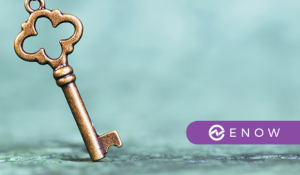5 Key Collaboration Capabilities That Are Imperative for Your M&A Day 1
A critical milestone during a merger or acquisition for enterprise end-users is Day 1. This is the...


In 2020, mergers and acquisitions (M&A) evolved rapidly. Activity started modestly at the beginning of the year, but M&As had plenty of potential to gather momentum. Then the pandemic hit, and by late March, most deal-making had come to a standstill. Focused on transitioning staff to working from home, shoring up balance sheets and maximizing liquidity, many companies shelved any M&A plans they may have had. The good news – global M&A activity recovered dramatically in the second half of 2020.
This year, the global M&A market could not be more different. It has recovered dramatically and carried over momentum from a flurry of deals in the latter half of 2020. This momentum is poised to accelerate even more with many companies making strategic shifts and acquiring smaller companies or merging with larger ones to maintain their competitive position. Even outside of the M&A trend that has been witnessed across numerous industries, is the trend towards globalization. No matter what size, small or large, any company working on an international level must manage multiple Active Directories and multiple Exchange organizations.
From an IT perspective, M&As can be challenging. To streamline the communication between employees working with various divisions or organizational units within their same organization, Outlook users can save pertinent information such as all email addresses and phone numbers for other colleagues in their Global Address Lists (GAL).
Country boundaries are not the only barrier to communication within companies with multiple Active Directories and organizational units. Even if you work for a small domestic firm, you still need a way to effectively combine Global Address Lists if your firm decides to synchronize all its crucial operational data with a parent company.
A well-known US health company has more than 30 subsidiaries. Each subsidiary typically has its own Active Directory with Exchange. It is obvious that the users in these two organizations know each other, but they do not have a centralized repository of data that is necessary for consistent mail communication. The faster employees can communicate with the necessary people, the more productive and happier everyone in the organization will be.
One of the disadvantages of this topology is that Outlook users can only list the mail addresses of their own Active Directory in Outlook’s (GAL). What happens to all the people who must communicate regularly with a colleague who is not listed in a centralized repository? The solution seems simple, but like everything else that seems too good to be true, it is! The temporary solution might be simple, but it is tedious and time-consuming, since employees add the missing contact information of colleagues to their personal address books. This is only a quick fix, however, for the next time something changes in that colleague’s contact information, the personal address book will not recognize the change, and the next phone call will mismatch. This will cause the user to have to manually make the change themselves, instead of having a simple software solution that does all the synchronization automatically.
Getting GAL in sync natively between forests is certainly a viable option, but it requires extensive preparation on the administrator’s part. Another stumbling block for IT teams attempting the synchronization of GALs manually on their own is that there must be a direct connection between the data sources, which can be complicated due to firewall restrictions.
Keeping GALs in sync for any period involves more than just creating some contacts on the other side. It involves keeping those objects and their properties in sync due to regular changes such as renames, terminations or new hires. GALsync from ENow syncs all the mail-enabled common object types. The sync is done by an export of data from source Active Directory and an independent import at target side. At export side, the selection of objects is customizable, along with the properties included for sync. At import side, attributes’ values might be customized, as well as some extended features for multi-organizations sync. To have GALs in sync between forests, GALsync is an affordable and flexible solution that does not burden the Exchange administrator with extraneous, complex identity management features.
Enabling employees of merging organizations to start collaborating is an essential first step towards achieving the expected synergies from a merger or acquisition on Day 1. So, a key M&A goal for IT to have Day 1 collaboration is to create a unified GAL. It is a small thing that can have a big impact on the overall success of the first few weeks and months of the merger.
Synchronizing contact and user data between Active Directory forests can be difficult, time-consuming, and error-prone. Make your life easier and streamline the M&A integration process with GALsync.


AmyKelly Petruzzella is a marketing executive who focuses on Microsoft Exchange, Office 365, and Active Directory trends, challenges, and business outcomes for enterprises. Over the years, AmyKelly regularly engages with Gartner industry analysts, and she has been recognized several times for Top 50 Microsoft Marketing Excellence. She is a frequent speaker and blogger and an industry veteran who advocates for women in technology.


A critical milestone during a merger or acquisition for enterprise end-users is Day 1. This is the...


A quote by Bill Gates, "Information technology and business are becoming inextricably interwoven. I...